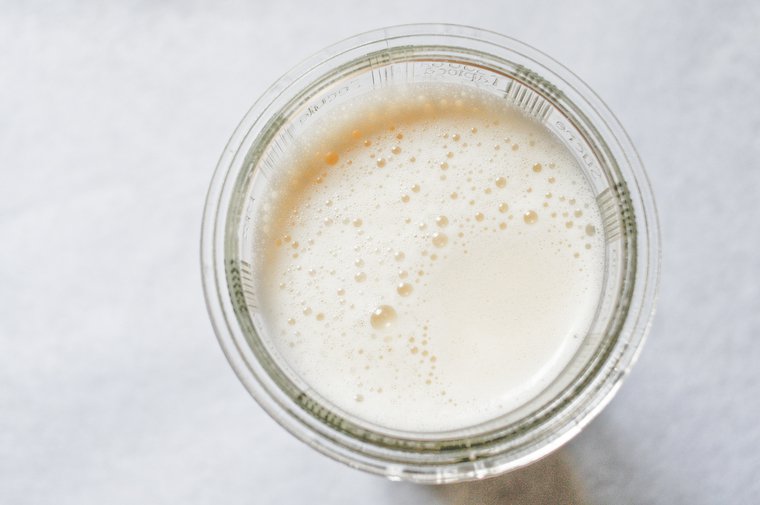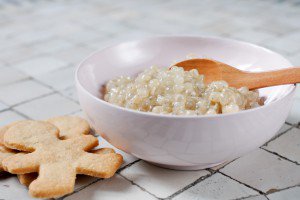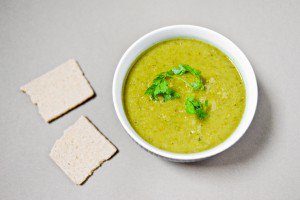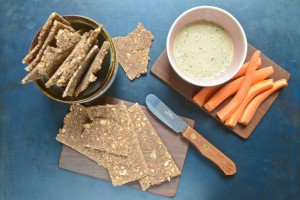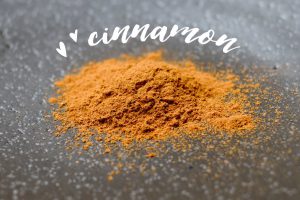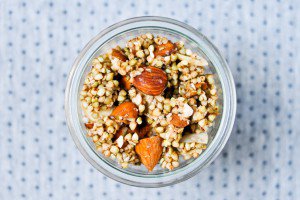From the department of Saving Money By Making Things From Scratch — the same department that campaigned for homemade hummus a couple of months ago — comes this public service announcement: preparing homemade oat milk is very easy and very cheap.
I don’t drink milk myself — oat or otherwise — but I use oat milk as an ingredient regularly, in this vanilla oat milk tapioca pudding or in this Swiss chard gratin, but also to make pastry cream for strawberry tartlets, or to whip up a batch of crêpes.
If you want to make homemade oat milk, there are several ways to go about it. You can start from rolled oats, from oat flour, or from oat groats, i.e. the dehulled grain of the plant. I like to use the latter (available from natural food stores) as they are the least processed of the three, and give the best results flavor- and texture-wise.
How to prepare homemade oat milk
All you need to do then is soak the oats overnight, cook them (or not, if you choose to make raw oat milk), blitz them with water and a little salt in a blender or food processor, and then strain.
From the department of Saving Money By Making Things From Scratch comes this public service announcement: making your own oat milk is very easy and very cheap.
Oat milk made from oat groats has a very pleasant texture, smooth and milky, with a richer mouthfeel than most non-dairy milks.
I will note that the raw version has a distinctive flavor that I would describe as grassy, and a bit of a bite, which you may or may not like. I personally wouldn’t drink it straight up (then again I don’t drink milk) but I use it in preparations that call for boiling or simmering the milk, which takes the edge off. The cooked version has a much milder flavor, one I very much enjoy, and it’s the one I use for crêpes, for instance.
The bonus byproduct of homemade oat milk is the oat pulp that remains in the sieve after you’ve strained the milk; this is sometimes referred to as okara by analogy with the soy milk making process. It is quite nutritious, so it would be foolish to toss it: if you’ve cooked the oats, you can eat it as porridge if you’re into that sort of thing, but if you haven’t or you aren’t, you can fold it into cake or muffin batters, or add it to bread dough, as I do.
Just to drive home my point about the money one saves by doing this: in my organic store, I can buy a package of 500 grams (17.6 ounces) of oat groats for 1.65€ ($2.45). This amount allows me to make 10 liters (10 quarts) of oat milk, which ends up costing 0.16€ ($0.24) per liter (if you cook the oats, a few cents should be added to account for the energy needed to run the stove for 40 minutes). By comparison, a carton of oat milk sold at the same organic store costs about 2€ ($3) per liter, in other words twelve times more.
Factor in the environmental cost of packaging and transporting the oat milk (which is mostly water) rather than the dried grain, and then transporting and recycling the carton (so much the better if you can buy oat groats in bulk; I can’t), and you have a pretty strong incentive to make your own.

Have you tried this? Share your pics on Instagram!
Please tag your pictures with #cnzrecipes. I'll share my favorites!
Ingredients
- 50 grams (1/4 cup) raw organic oat groats (ensure they are certified gluten-free if gluten is an issue)
- 1/4 teaspoon sea salt (optional)
Instructions
- Put the oat groats in a bowl, cover with fresh water, and leave to soak for 8 hours or overnight. Rinse the oats and throw out the soaking water.
- If there is time, leave the oats in the colander at cool room temperature for 12 to 24 hours, to initiate the sprouting process.
- Put the oats in a blender* with the salt, if using, and 1 liter (1 quart) fresh water, and whizz until very smooth.
- Let the water and oats mixture rest for 1 hour at room temperature.
- Place the oats, the salt if using, and 250 ml (1 cup) fresh water in a saucepan. Bring to a simmer over medium heat, cover, and cook at a low simmer for 40 minutes (or according to package instructions). Let cool completely.
- Transfer to a blender (see note), add 750 ml (3 cups) fresh water, and whizz until very smooth.
- Strain through a fine-mesh sieve into an airtight container. (Reserve the solids and add them to a bread dough, or a cake or muffin batter.)
- Oat milk will keep for 4 to 5 days in the fridge. It will separate as it sits; stir very well before using.
- If you're going to use the oat milk for drinking, rather than cooking, you can sweeten it to taste with a little honey or other liquid sweetener, and flavor it with vanilla, spices, cocoa powder, or fruit syrup.
Notes
If you don't have a blender, you can use a food processor. However, food processors aren't watertight, and if you add in the water all at once, it will leak out from the lid. What you need to do then is process the oats with just a little of the water at first, say 80 ml (1/3 cup). When the oats are roughly puréed, add a little more water and process until finely puréed. Add the rest of the water out of the food processor, and stir to combine.


